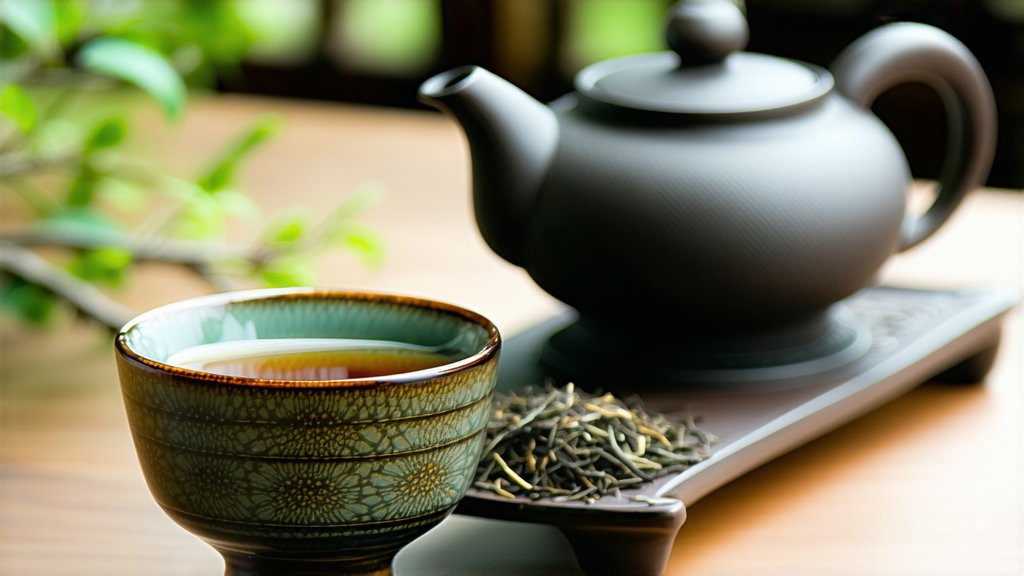
Pu-erh tea, a distinguished member of the dark tea category in China, stands as an enigmatic and storied beverage that has captivated tea enthusiasts for centuries. Originating from the Yunnan province, this tea boasts a rich history intertwined with the cultural and economic tapestry of ancient China. In this exploration, we delve into the multifaceted world of Pu-erh tea, examining its historical roots, diverse varieties, intricate production processes, and the art of its appreciation.
Historical Background
Pu-erh tea's history is deeply embedded in the annals of Chinese culture. Its origins can be traced back over a thousand years to the Tang Dynasty (618-907 AD), although it gained significant prominence during the Ming (1368-1644) and Qing (1644-1912) dynasties. The name "Pu-erh" itself is derived from the market town of Pu'er in Yunnan Province, where tea traders would gather to trade their goods along the ancient Tea Horse Road.
Historically, Pu-erh tea was not only a coveted beverage but also served as a medium of exchange and a crucial component in the diplomacy between different regions and neighboring countries. Its ability to preserve well over long journeys made it an ideal commodity for trade, contributing to its widespread popularity across Asia and beyond.
Varieties of Pu-erh Tea
Pu-erh tea comes in two primary forms: raw (Sheng) and ripe (Shou). Each type undergoes a distinct fermentation process, resulting in unique flavors, aromas, and aging potential.
Raw Pu-erh (Sheng)
Raw Pu-erh tea is crafted from sun-dried green tea leaves, which are then compressed into various shapes such as cakes, bricks, or tuocha (nestled tea). Unlike its ripe counterpart, Sheng Pu-erh does not undergo a deliberate fermentation process immediately after pressing. Instead, it ages naturally over time, allowing microbial activity to gradually transform its characteristics. This natural fermentation process can span decades, with the tea evolving in flavor complexity and depth as it matures.
Ripe Pu-erh (Shou)
Ripe Pu-erh tea, on the other hand, undergoes a controlled fermentation process known as "wet piling" or "wo dui." During this process, loose-leaf tea is piled up and left to ferment under controlled humidity and temperature conditions. This accelerates the aging process, imparting a mellow, earthy flavor profile that many tea connoisseurs prize. The wet piling process typically lasts several months, after which the tea is compressed into its final form.
Production Process
The production of Pu-erh tea involves several meticulous steps, each contributing to its distinctive character:
-
Plucking: High-quality tea leaves are handpicked, usually from ancient tea trees in the Yunnan region. These leaves are often sourced from百年老树 (centenarian trees), which are believed to produce superior tea.
-
Withering: The freshly picked leaves are spread out to wither under the sun, reducing moisture content and softening the leaves for subsequent processing.
-
Fixation: The withered leaves are briefly heated to halt enzymatic activity, preserving the green color and fresh scent of the leaves. This step differentiates Sheng Pu-erh from other types of black tea.
-
Rolling: The fixed leaves are rolled to break down cell walls, facilitating the release of flavors during brewing.
-
Fermentation: For Sheng Pu-erh, this step involves natural aging over time. For Shou Pu-erh, the wet piling process is employed to expedite fermentation.
-
Drying: After fermentation, the tea is dried to achieve the desired moisture content.
-
Compressing: The dried leaves are then pressed into various shapes using traditional stone molds, creating the iconic compressed forms associated with Pu-erh tea.
The Art of Tasting Pu-erh Tea
Tasting Pu-erh tea is an experience that engages all the senses, requiring patience and an open mind to fully appreciate its complexities. Here is a guide to savoring this remarkable beverage:
-
Preparation: Use a Yixing clay teapot or a Gaiwan for optimal flavor extraction. Rinse the leaves briefly with hot water to awaken them.
-
Brewing: Steep the tea leaves in water heated to around 95°C (203°F). The steeping time varies depending on personal preference and the age of the tea. Generally, younger Sheng Pu-erh benefits from shorter steeps (around 10-15 seconds), while older Sheng and Shou Pu-erh may require longer steeps (up to 30 seconds or more).
-
Observation: Admire the tea's color and clarity. Young Sheng Pu-erh often exhibits a bright yellow hue, while aged Sheng and Shou display deeper, more reddish tones.
-
Aroma: Inhale the fragrance of the brewed tea. Younger Sheng Pu-erh tends to have a fresh, vegetal aroma, whereas aged teas exude earthy, woody notes with hints of caramel or mushroom.
-
Tasting: Sip the tea slowly, allowing it to coat your palate. Notice the initial taste, mid-mouth feel, and aftertaste. Young Sheng Pu-erh is typically astringent with a robust, slightly bitter flavor, while aged teas offer a smoother, mellower profile with subtle sweetness and complexity.
-
Evaluation: Reflect on the tea's mouthfeel—its texture and body. Consider its balance between bitterness, sweetness, and any unique characteristics that distinguish it from other teas.
Conclusion
Pu-erh tea is more than just a beverage; it is a testament to China's rich cultural heritage and centuries-old tea traditions. From its storied past to its meticulous production process and intricate tasting rituals, Pu-erh encapsulates the essence of what makes tea such a revered part of Chinese society. Whether you are a seasoned tea drinker or a curious novice, exploring the world of tea for the first time, Pu-erh offers an unparalleled journey through flavor, history, and craftsmanship. Embrace the opportunity to discover this extraordinary tea and let it transport you to the misty mountains of Yunnan and the bustling tea markets of ancient China.